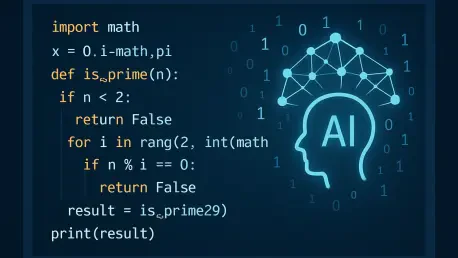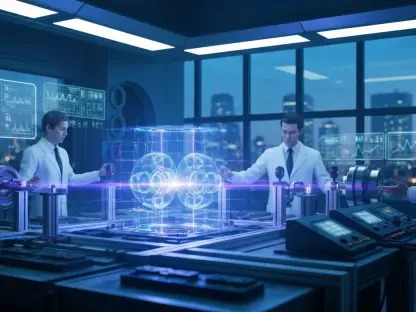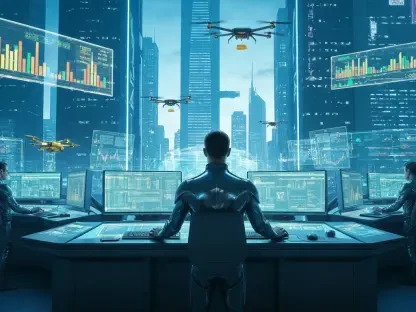Imagine a world where complex mathematical problems are solved in seconds by machines, and intricate lines of code are written with flawless precision, yet the same technology falters when asked to craft a novel or devise a groundbreaking business strategy. This dichotomy lies at the heart of artificial intelligence’s current capabilities and limitations. As AI continues to reshape industries, a clear pattern emerges: tasks with measurable, objective outcomes are being transformed at an unprecedented pace, while those requiring human intuition and imagination remain largely out of reach. This distinction, articulated by industry experts, offers a framework for understanding where AI is headed and how it might impact the job market. By examining the nature of tasks and their amenability to automation, a clearer picture forms of the technology’s strengths and the areas where human expertise still reigns supreme.
Understanding AI’s Strengths and Limitations
Defining Task Verifiability in Automation
The concept of verifiability stands as a pivotal factor in determining how effectively AI can automate a given task. In domains where outcomes can be objectively measured—such as solving equations or debugging software—AI demonstrates remarkable proficiency, often surpassing human capabilities. These tasks allow for repeated iterations in controlled environments, where success or failure is clear and immediate feedback drives improvement. Think of a coding platform where a program either runs correctly or it doesn’t; AI can test countless variations until the desired result is achieved. This ability to optimize through trial and error, guided by defined metrics, positions AI as a game-changer in technical fields. The rapid progress in these areas highlights why certain roles, particularly those rooted in precision and logic, are increasingly influenced by automation, reshaping expectations for efficiency and accuracy across industries.
Beyond the surface, the mechanics of verifiability reveal why AI excels in structured settings. Unlike human workers who may tire or err, AI systems can tirelessly iterate through possibilities, leveraging vast datasets to refine their outputs. In mathematics, for instance, algorithms can verify solutions against known answers, ensuring correctness with speed unattainable by most individuals. This relentless optimization is powered by techniques like gradient descent, which fine-tunes neural networks to achieve peak performance. However, this strength is tied to the presence of clear benchmarks. Without a definitive way to measure success, AI struggles to adapt, underscoring a critical boundary in its application. As industries adopt these tools, the focus often shifts to tasks that can be broken down into verifiable components, leaving more ambiguous challenges to human oversight.
Challenges in Unstructured Domains
When tasks lack clear, measurable outcomes, AI’s progress slows considerably, exposing its limitations in areas demanding creativity or strategic insight. Consider the role of a novelist crafting a story; the quality of the work hinges on subjective elements like emotional resonance and originality, which cannot be easily quantified or iterated upon in a systematic way. AI might generate text, but it often falls short of capturing the nuanced depth that human authors bring to their craft. This gap stems from the technology’s reliance on patterns and imitation rather than genuine innovation, making it difficult to replicate the unpredictable nature of human imagination. As a result, professions rooted in artistic expression or abstract problem-solving remain less vulnerable to automation.
Moreover, strategic roles, such as those held by corporate leaders, present another hurdle for AI due to the complexity and subjectivity involved. Decision-making at this level often spans long timeframes and involves weighing intangible factors like cultural dynamics or ethical considerations—elements that defy straightforward evaluation. Unlike a coding error that can be fixed in minutes, a flawed business strategy might take years to manifest, with no resettable environment for AI to learn from. This lack of immediate feedback loops hinders the technology’s ability to optimize in such contexts. While AI can assist with data analysis to inform decisions, the final judgment still rests with human leaders who can navigate ambiguity and adapt to unforeseen challenges, illustrating a persistent divide in automation’s reach.
Forecasting AI’s Impact on the Job Market
Rapid Transformation in Technical Fields
In technical domains where tasks are verifiable, AI is already driving significant disruption, reshaping entire professions with its capacity for precision and speed. Software development serves as a prime example; AI tools can now write functional code, identify bugs, and even suggest optimizations faster than many seasoned programmers. This transformation is fueled by the ability to test outputs against concrete standards—code either works or it doesn’t—enabling rapid iteration and improvement. As these tools become more integrated into workflows, they are not just augmenting human effort but, in some cases, replacing routine aspects of jobs. The implication for workers in these fields is clear: adaptability and upskilling are essential to stay relevant amid accelerating automation.
Equally striking is AI’s influence on fields like data analysis and engineering, where objective metrics guide progress. Algorithms can process vast datasets to uncover patterns or predict outcomes with a level of accuracy that often outstrips human analysts. This capability is transforming how businesses operate, from optimizing supply chains to enhancing cybersecurity measures. However, this rapid adoption also raises questions about job displacement in roles centered on repetitive, rule-based tasks. While AI handles the grunt work, it simultaneously pushes the demand for skills in oversight, interpretation, and integration of these technologies. The trajectory suggests a future where technical professions evolve to focus more on managing AI systems rather than performing the tasks themselves.
Persistent Human Dominance in Creative Roles
Turning to creative and strategic occupations, the outlook for AI automation appears far less certain, with human expertise maintaining a strong foothold. In fields like graphic design or filmmaking, success is often measured by subjective impact—how an audience feels or reacts—rather than a binary right or wrong. AI can generate designs or scripts based on existing patterns, but it frequently lacks the cultural context or emotional depth that humans naturally infuse into their work. This limitation ensures that roles requiring a personal touch or innovative vision remain largely insulated from full automation, even as AI tools offer support in specific, technical aspects of the creative process.
Similarly, leadership positions that demand long-term vision and nuanced judgment stand apart from AI’s current capabilities. Executives must navigate complex interpersonal dynamics and make decisions under uncertainty, often with delayed or ambiguous feedback. These conditions are ill-suited to the optimization-driven approach of AI, which thrives on immediate, verifiable results. While technology can provide valuable insights through data modeling, the essence of strategy and human connection in these roles cannot be replicated. Looking ahead, it’s evident that such professions will continue to rely on uniquely human skills, preserving a space where intuition and experience outweigh algorithmic precision.
Reflecting on AI’s Uneven Progress
Looking back, the journey of AI reveals a stark contrast between its mastery of verifiable tasks and its shortcomings in creative and strategic arenas. In structured domains like coding and mathematics, the technology demonstrates an unparalleled ability to refine and excel through measurable outcomes. Yet, in fields where ambiguity and human judgment define success, AI stumbles, unable to bridge the gap between imitation and true innovation. This uneven advancement underscores a fundamental truth: the nature of a task shapes the extent of automation’s reach. As industries adapt to these dynamics over time, the focus shifts toward harnessing AI for efficiency in technical roles while safeguarding the irreplaceable value of human insight in less defined areas. Moving forward, the challenge lies in striking a balance—leveraging AI’s strengths to enhance productivity while investing in education and training to empower workers in roles that demand creativity and strategy. This dual approach promises to shape a future where technology and humanity coexist in complementary ways.









